Introduction
Songbirds, also known as the genus Passerines, are a diverse group of birds. They are famous for their beautiful small to medium size and the different pleasant tones they produce. There are more than 4000 types of songbirds found all around the world. These birds not only enchant our ears with their melodious voices but also play an important role in our ecosystem. From seed dispersal to controlling insect populations, songbirds contribute significantly to maintaining a healthy environment. What sets them apart from other birds is the distinctive tone of their songs, which they use for communication, attracting mates, and establishing territory.
Table of Contents
Characteristics of Songbirds
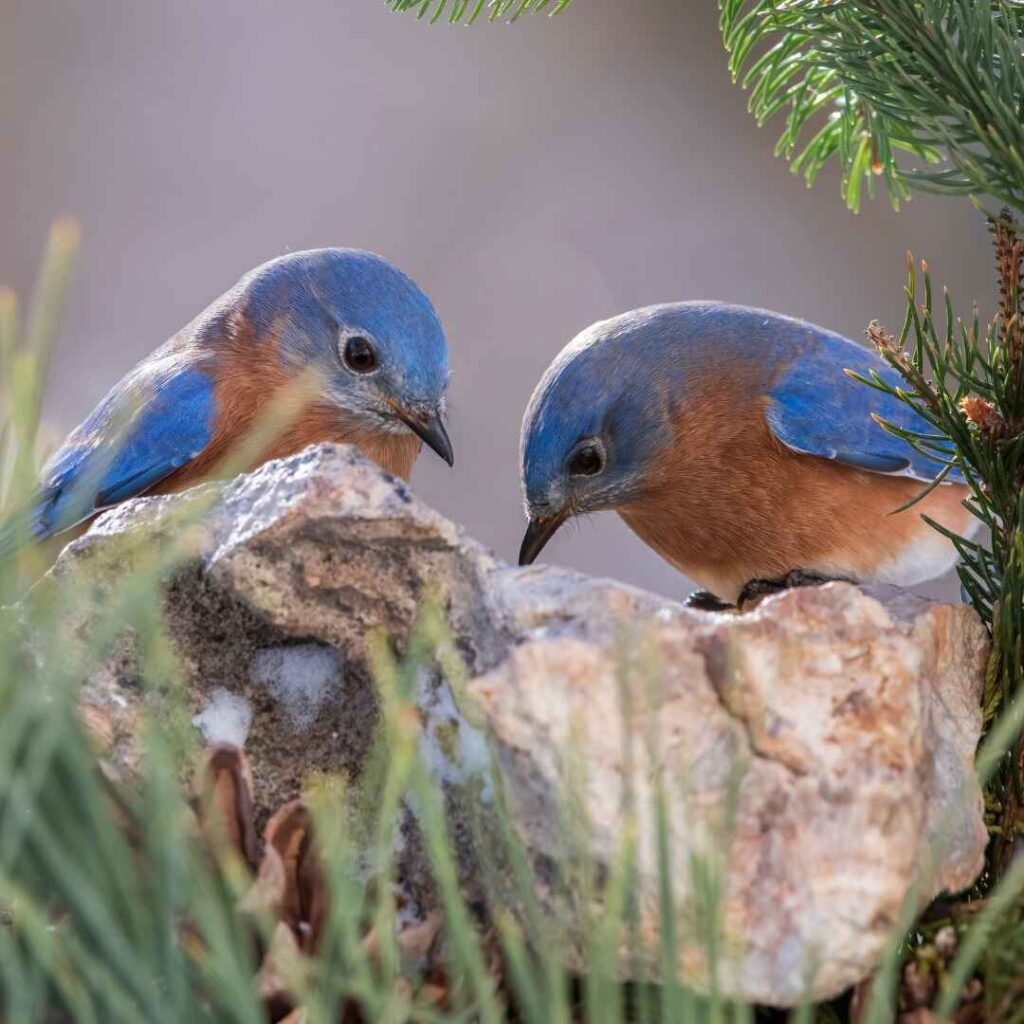
Songbirds have different characteristics that help us understand them better. Songbirds, also known as passerines or oscine birds, are a diverse group of birds characterized by certain traits that differentiate them from other bird species. Here are the key characteristics that define these birds.
Highly Developed Syrinx (Vocal Organ)
Songbirds have a specialized vocal organ (syrinx) that helps them produce a wide range of sounds.
Complex Vocal Learning
Songbirds are capable of vocal learning, which means they have the ability to remember and modify the sounds of other birds they hear.
Strong Specialized Bills
They have typically strong bills, but the shape of the bill can vary depending on the species.
Perching Feet
They possess specially adapted feet designed for perching, allowing them to grip and cling securely to branches.
Feather and Plumage
Some songbirds have vibrant plumage, often with bright colors or distinct patterns. This colorful plumage plays a key role in attracting a mate. Their feathers also play a role in their flight.
Small to Medium Size
The size of these birds is small to medium, ranging from 4 to 20 cm in length.
Migratory Behavior
Some songbirds migrate. This migration is done for breeding or due to changes in the weather.
Diverse Habitat Range
Their species are found almost all over the world, from forests and grasslands to urban areas.
Diet
The diet of songbirds depends on the species and seasonal needs. Some songbirds eat seeds and berries, some species also eat insects or nectar.
Territorial Behavior
Many songbirds are territorial, especially during the breeding season. Males often sing loudly to establish and defend their territories from other males.
Differentiation from Other Birds
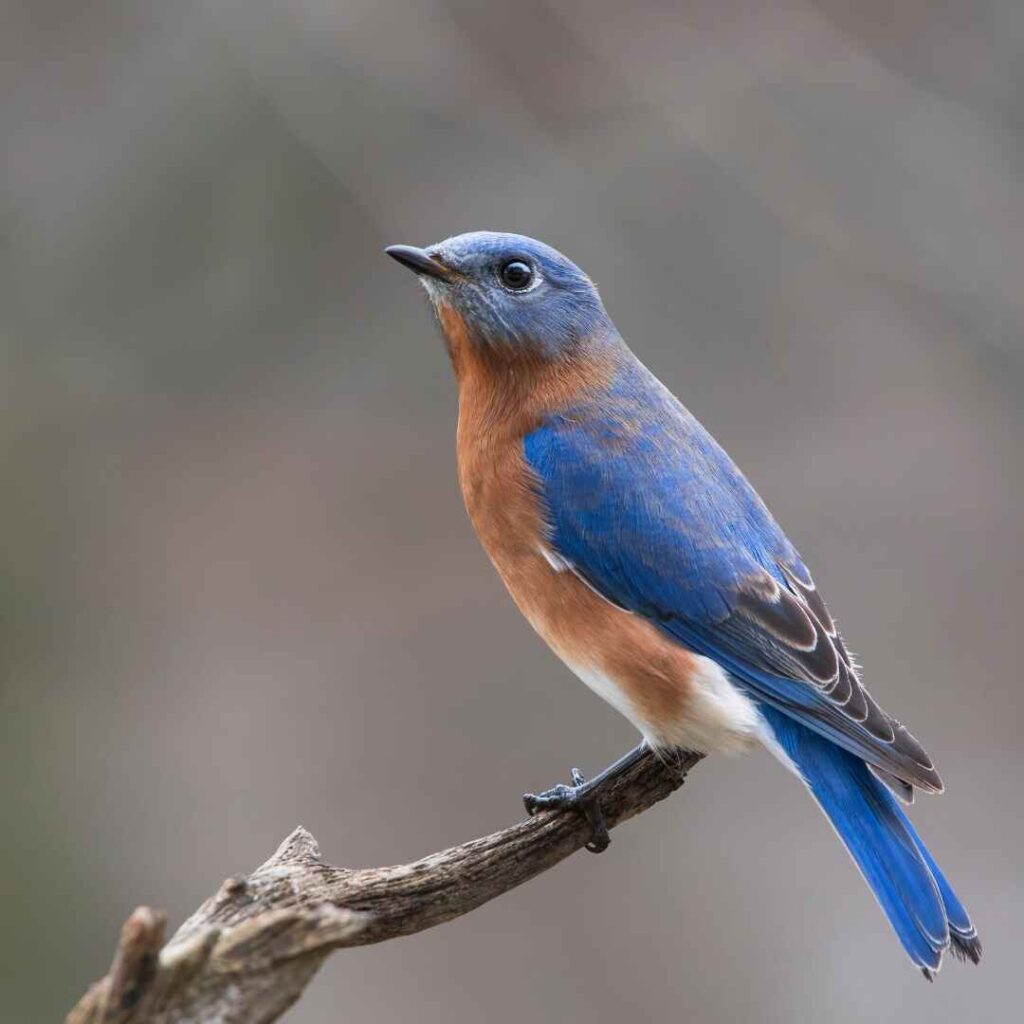
Non-Songbirds
Many other bird species, like waterfowl (e.g., ducks, swans) , wading birds ,or pigeons do not have the same capacity for vocal learning. These birds might communicate using simpler calls.
Non-vocal learners
Birds such as conures, parrots, etc. Although capable of imitating human speech, are not classified as songbirds because their vocalizations are not as complex as true songbirds.
Vocal Abilities: The Syrinx in Songbirds
The syrinx is a unique vocal organ in birds, including songbirds, situated where the trachea meets the bronchi. It is a key structure that enables them to produce complex sounds and vocalizations. They use these sounds for mating calls, territory defense, and communication within flocks. According to Research, the birds in which Syrinx organs are found are also problem solvers due to the size of their brains being greater than normal size.
Physical Traits
There is variation across species of songbirds, they generally share several key physical features. These traits are adapted to their lifestyles, foraging, singing, and migration.
Size
They vary in size, but they are generally small to medium-sized birds. Small size species of songbirds are approximately 3.5 inches long and larger species are around 10 inches in length.
Plumage
The plumage in songbirds is bright and colorful, particularly in males which helps them to attract mates during breeding season. In many species, the plumage is seasonal, with duller feathers during non-breeding times for better protection from predators.
Beaks
The shape and size of the beak can vary significantly among songbirds, reflecting their diet and feeding habits. Seed-eating species have thick, conical beaks, Insectivorous species often have slender, pointed beaks and Omnivorous species might have more versatile, slightly hooked beaks.
General Body Structure
Wings
They usually have powerful, pointed wings that enable fast and nimble flight.
Legs and Feet
The feet of most songbirds are zygodactyl and legs are generally short and strong.
Tail
Many songbirds have relatively long tails that provide balance during flight while some species use tail displays as part of courtship rituals.
Common Types of Songbirds
There are several species of songbirds found all over the world with their unique characteristics and abilities. Some of the common songbird types and their unique features are described below:
American Robin (Turdus migratorius)

Appearance
This is a medium-sized bird with an orange-red breast and a gray-brown back.
Habitat
These birds are common in North America. These birds are found in suburban areas, parks, and gardens.
Unique Feature
These birds are Known for their early morning song and migratory habits.
Northern Mockingbird
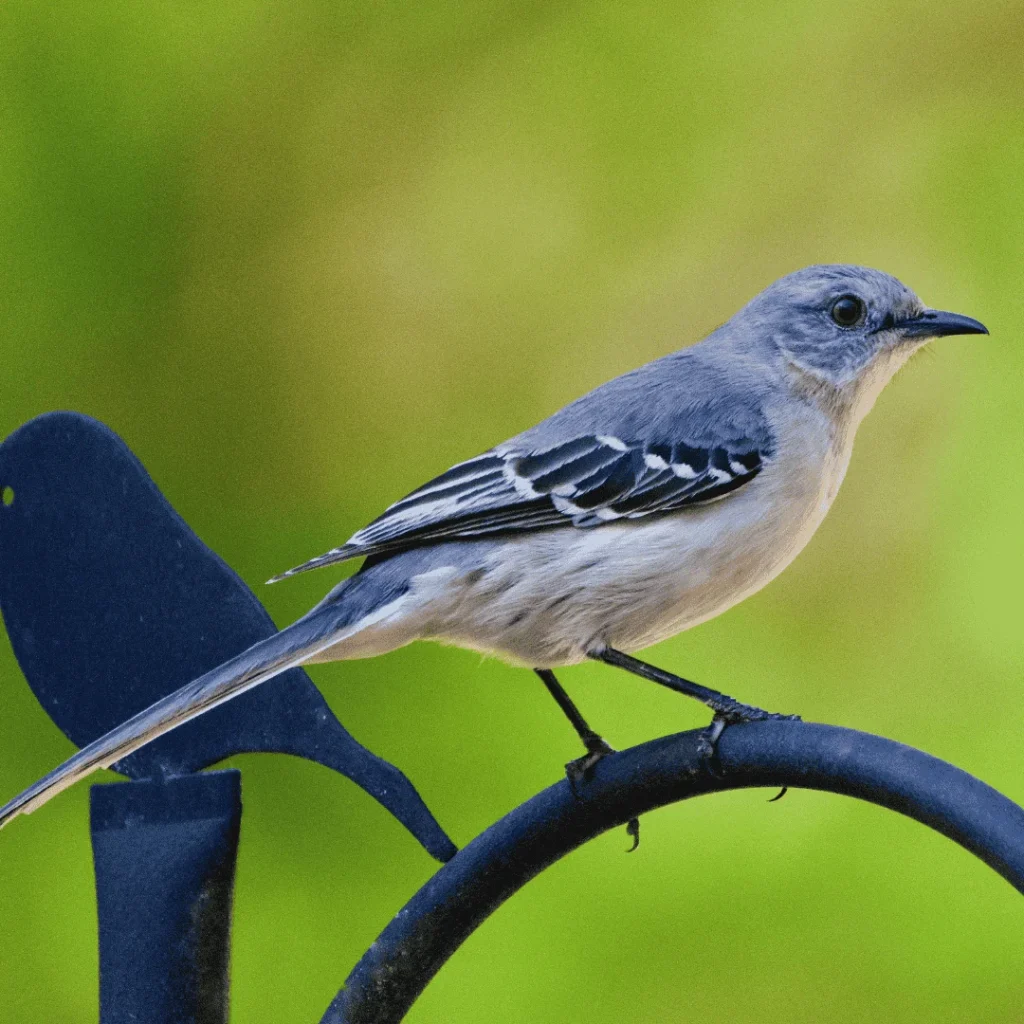
Appearance
This is a medium-sized bird with a grayish body color white wing bars and tail spots.
Habitat
These birds are common in North America and are often found in urban areas and gardens.
Unique Feature
The Northern Mockingbird can repeat phrases up to 30 times in a row, and it sings at all hours of the day and night.
European Starling
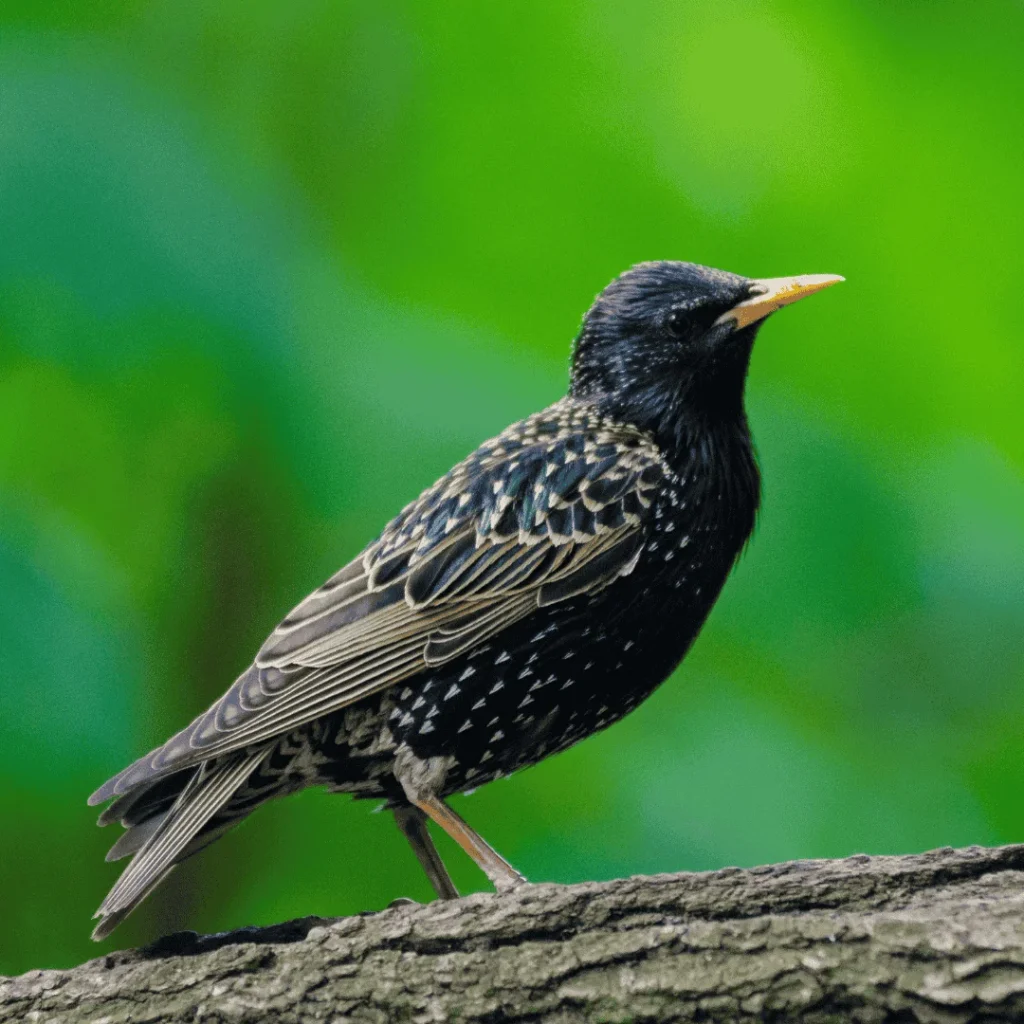
Appearance
It is a moderately sized bird, characterized by dark feathers, a bright yellow bill, and a compact tail.
Habitat
These birds originate from Europe but are now widespread in North America, especially in urban and suburban areas.
Unique Feature
European Starlings are highly social birds and form large flocks.
House Finch
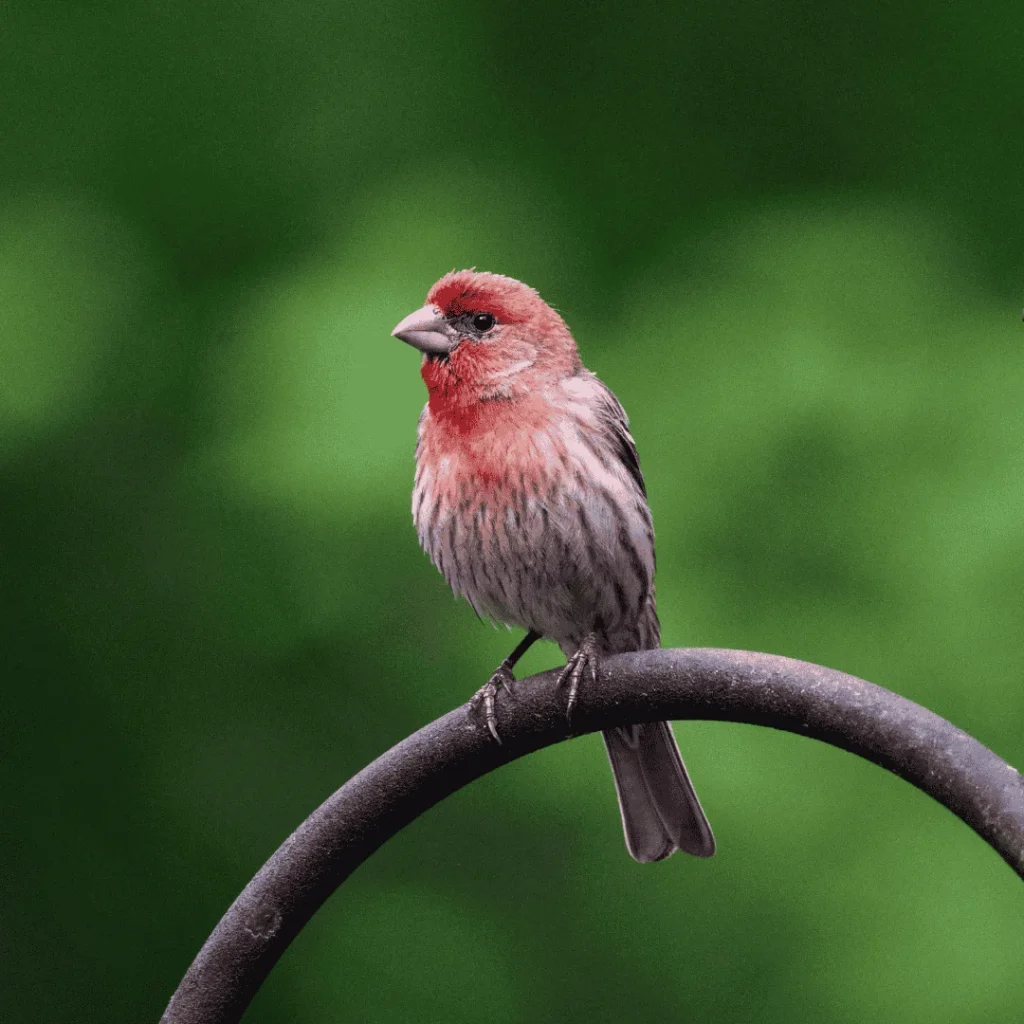
Appearance
A house finch is a small-sized bird with red plumage on the male and streaky brown feathers on the female.
Habitat
These birds are common in urban areas, parks, and backyards across North America.
Unique Feature
House Finches have adapted to live closer to humans and can be found in cities and towns, where they often nest on building ledges.
Wood Thrush
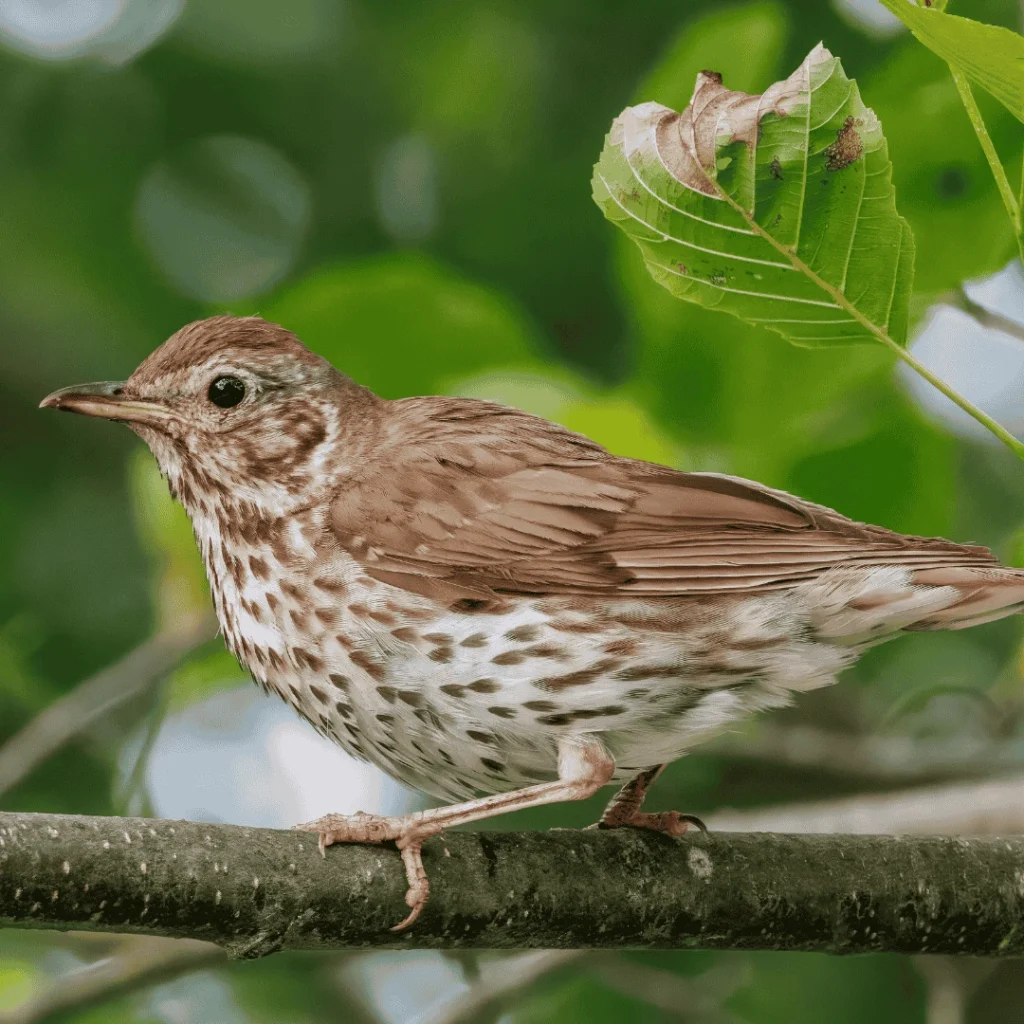
Appearance
The wood thrush is a bird of moderate size, distinguished by its brown upperparts, white underside, and a breast marked with dark spots.
Habitat
These birds are found in deciduous forests across eastern North America.
Unique Feature
These birds are known for their ethereal and melodic song.
Eastern Meadowlark
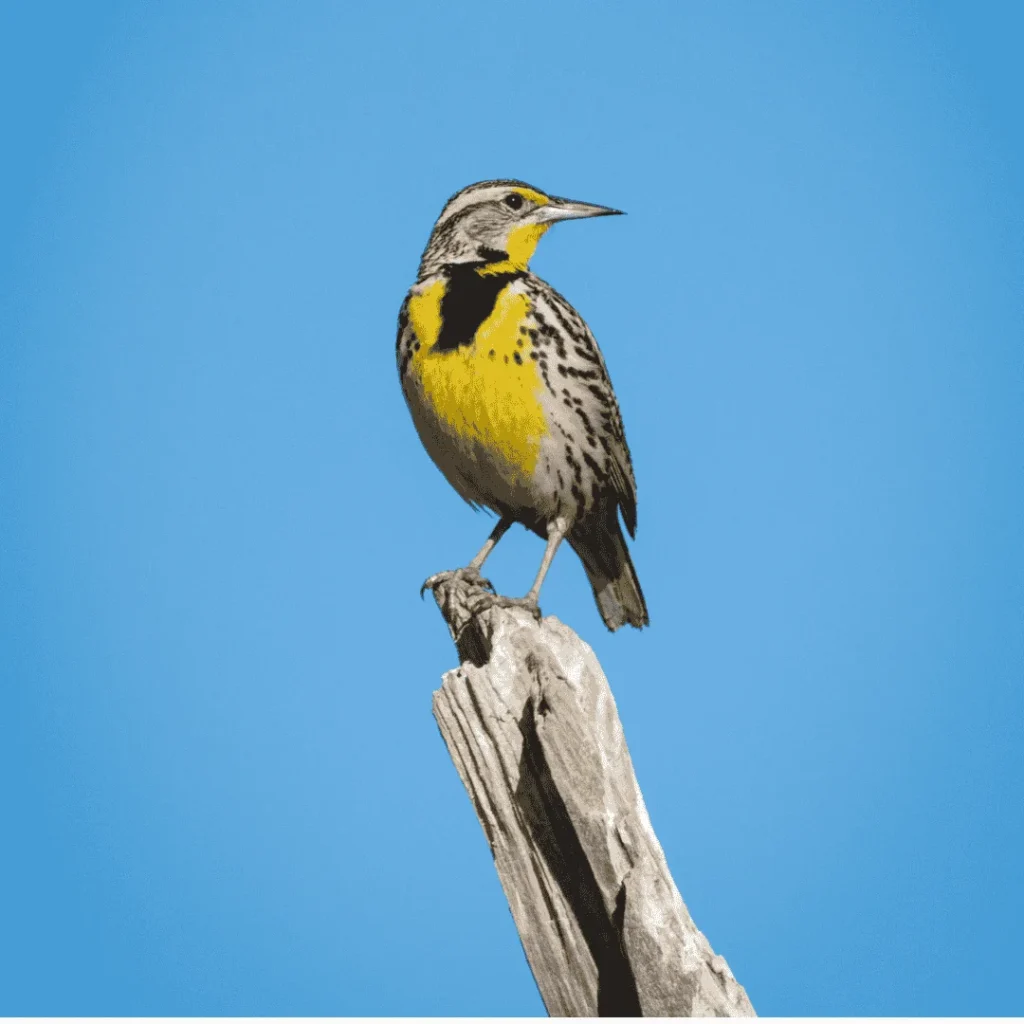
Appearance
The Eastern Meadowlark is a medium-built bird, notable for its vivid yellow underside and a striking black V-shaped pattern across its chest.
Habitat
These birds prefer open fields and meadows across eastern North America.
Unique Feature
These birds are Known for their distinctive “spring” song.
The Role of Songbirds in the Ecosystem
They are not just a delightful soundtrack to our natural surroundings but also play an important role in maintaining a balanced and healthy ecosystem. They contribute in numerous ways, helping to support both plant and animal life around them. Some of them are given below:
Pollination and Seed Dispersal
Whenever we talk about pollination, everyone thinks about butterflies and bees in their mind but apart from these, there are also some species of songbirds that take part in pollination. When these species feed on nectar or forage among flowers, unintentionally transfer pollen from one bloom to another, helping plants reproduce. Many of them eat fruits and berries, and the seeds pass through their digestive systems before being dropped in new locations. This natural process helps in forest regeneration and boosts biodiversity.
Pest Control
They help in pest control as they feed on insects and worms. Due to their insects eating habits pesticides are less used by farmers on crops. During their breeding season, they consume even more insects to feed their young ones.
Indicators of Environmental Health –
The presence of these birds tells us about the health of the ecosystem of that state. If songbirds are in greater numbers then the ecosystem is healthy and if they are decreasing then it is a sign that something is off or maybe the air or water quality has changed.
Conservation of Songbirds
The beauty and importance of these birds have inspired conservation efforts around the world. Protection of songbirds not only for preserving their melodies but also because of their special role in the ecosystems.
Threats to Songbirds
Today, these birds face many challenges and threats. Whether it’s shrinking habitats or pollution, the effects of climate change, or attacks from external predators, these beautiful birds are struggling to survive.
Conservation Efforts
Around the world, there are several Organizations alone or with the collaboration of the government that are working to protect songbirds from decline. Their core duties are to preserve natural habitats, plant native vegetation, create bird-safe building designs, and restrict the use of harmful pesticides.
How You Can Help
We can help and protect songbirds by taking simple steps like putting up bird feeders, planting native plants, and keeping our pet cats indoors. These small but impactful steps provide a safer and more welcoming environment for them.
Conclusion
Songbirds are small but heartwarming birds, both for their appearance and their pleasant voices. All of us need to understand their importance in a healthy ecosystem and provide them with all the essential needs they need to survive in their environment.
FAQs
Q. 1 Which bird is known as a songbird?
Ans. There is no single bird that we say is a songbird. They are small to medium-sized birds known for producing pleasant sounds.
Q.2 What is the meaning of songbird?
Ans. The meaning of a songbird is a sound-producing bird.
Q.3 What is a common songbird?
Ans. The common songbird is the House finch.
Q.4 Is a crow a songbird?
Ans. Yes, some species of crow are known as songbirds.



